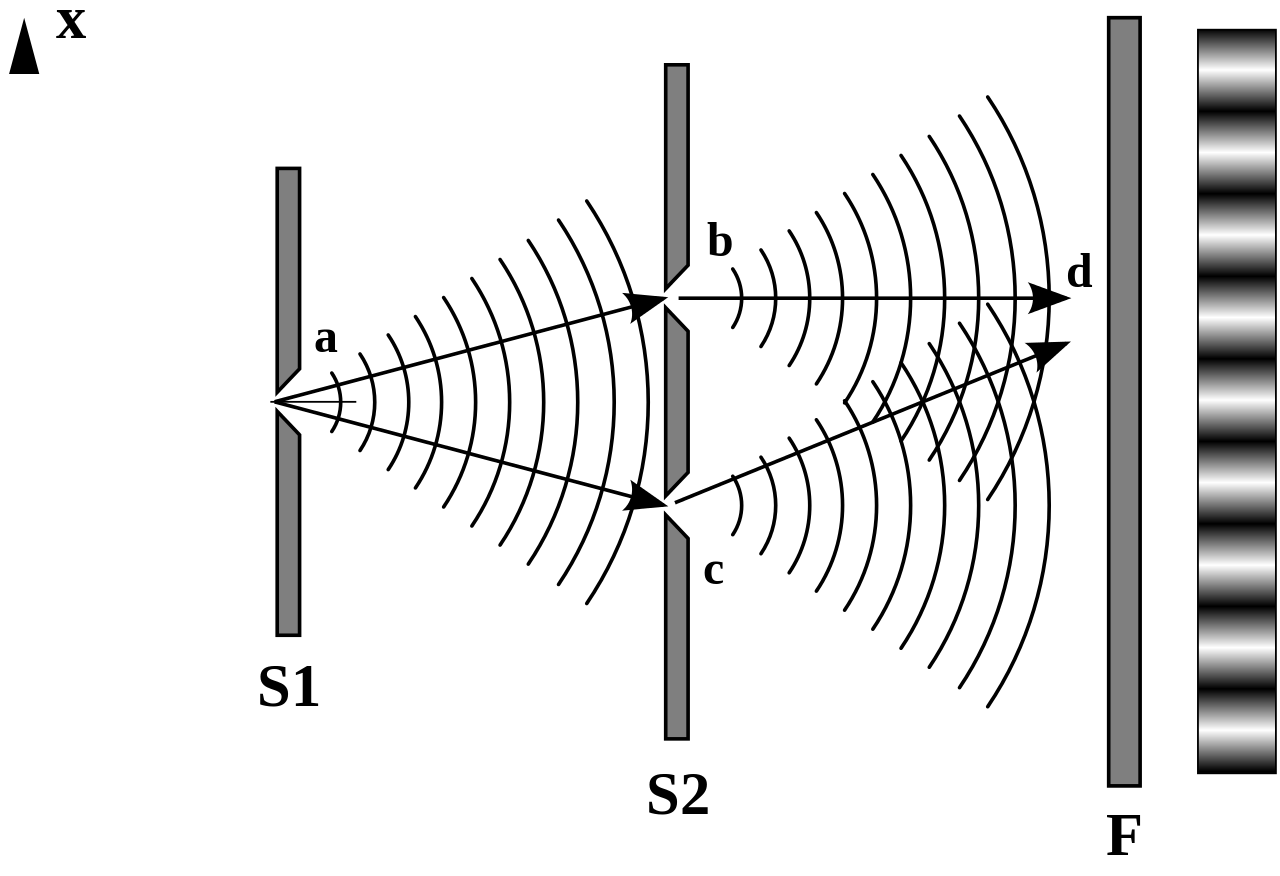Thomas
Young (1773-1829) performed the first visible-light interference experiments
using a clever technique to obtain two coherent light sources from a single
source. When a single narrow slit is illuminated, the light wave that passes
through the slit diffracts or spreads out. The single slit acts as a single
coherent source to illuminate two other slits. These two other slits then act
as sources of coherent light for interference.

Young technique for illuminating two slits with coherent
light. The single slit on the left serves as a source of coherent light.

In Young's interference experiment, incident monochromatic
light is diffracted by slit a,
which then acts as a point source of light that emits semicircular wavefronts.
As that light reaches screen S2. it is diffracted by slits b
and.c, which then act as two point sources of light. The light waves
traveling from slits b and c overlap and undergo interference,
forming an interference pattern of maxima and minima on viewing screen F. This
figure is a cross section; the screens, slits, and interference pattern extend
into and out of the page. Between screens s2 and F, the semicircular
wavefront's centered on c depict the waves that would be there if only c
were open. Similarly, those centered on c depict wave that would be if
only c were open. Points of interference maxima from visible bright rows
called bright bands, bright fringes, or (loosely speaking) maxima that extend
across the screen





No comments: